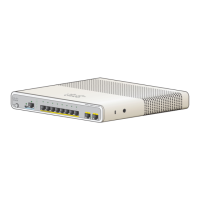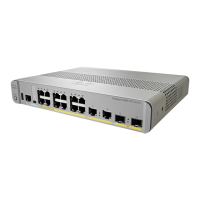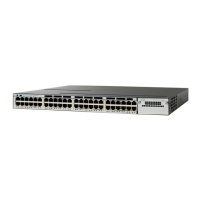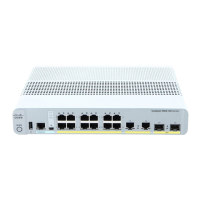2-38
Catalyst 3550 Multilayer Switch Command Reference
OL-8566-02
Chapter 2 Catalyst 3550 Switch Cisco IOS Commands
class
class
Use the class policy-map configuration command to define a traffic classification for the policy to act
on. Use the no form of this command to delete an existing class map.
class class-map-name
no class class-map-name
Syntax Description
Note Though visible in the command-line help strings, the class class-default option is not supported.
Defaults No policy map class-maps are defined.
Command Modes Policy-map configuration
Command History
Usage Guidelines Use the policy-map global configuration command to identify the policy map and to enter policy-map
configuration mode before you use the class command. After you specify a policy map, you can
configure a policy for new classes or modify a policy for any existing classes in that policy map. You
attach the policy map to an interface by using the service-policy interface configuration command.
The class name that you specify in the policy map ties the characteristics for that class to the class map
and its match criteria as configured by using the class-map global configuration command.
The class command performs the same function as the class-map global configuration command. Use
the class command when a new classification, which is not shared with any other ports, is needed. Use
the class-map command when the map is shared among many ports.
After you enter the class command, the switch enters policy-map class configuration mode, and these
configuration commands are available:
• exit: exits policy-map class configuration mode and returns to policy-map configuration mode.
• no: returns a command to its default setting.
• police: defines a policer or aggregate policer for the classified traffic. The policer specifies the
bandwidth limitations and the action to take when the limits are exceeded. For more information,
see the
police and police aggregate policy-map class commands.
class-map-name Name of the class map.
Release Modification
12.1(4)EA1 This command was introduced.
12.1(9)EA1 The access-group, any, dscp, destination-address, input-interface,
precedence, protocol, and source-address keywords were removed.

